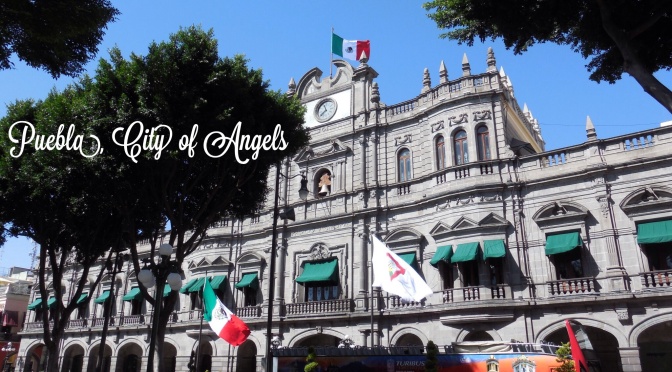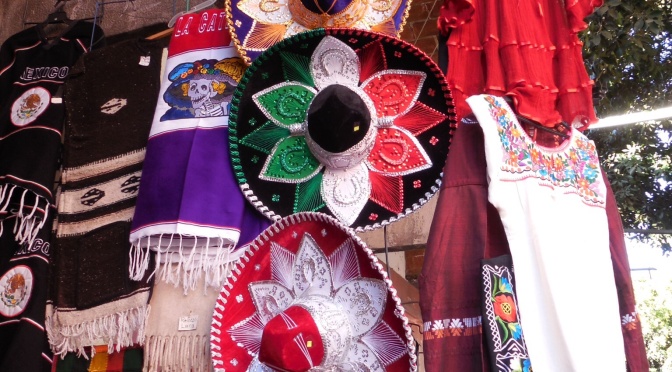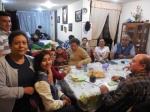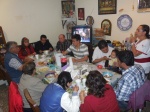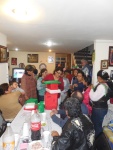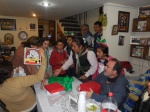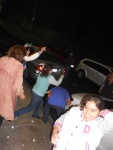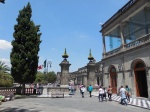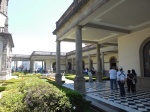The city of Puebla (capital of the state of the same name) is not only set in the geographical heart of Mexico, but is famed for being the religious and historical centre as well. There is no doubt that Puebla has an abundance of public attractions, but more than that, you can sense authentic traditional Mexican culture in the streets: it’s a wonderful mix of the old and the new, charmingly preserved by its inland location. What was once meant to be the capital of Mexico (Poblanos tell me this, people from Mexico City highly contest it) boasts an incredibly rich background in all things truly Mexican, including food, art, and indigenous, religious and colonial history.
Two of Puebla’s mottos are La Ciudad que Queremos – The City that We Love, and Ciudad de Progreso – City of Progress: they are indicative of the notable increase in tourism that Puebla has experienced in recent years. State and national campaigns have worked hard to put Puebla on the map and both national and international travellers are increasingly seeking a more deeply cultural experience of Mexico than many of the coastal resorts have to offer. A part of this initiative to make Puebla’s rich culture more accessible is Noche de Museos – Night of Museums. One Friday evening of each month many museums offer free entry, for everyone, from 5 to 10pm. The locals embrace this as much as visitors, and it’s a great way to enjoy some of Puebla’s best attractions.
Unlike many world-famous European cultural institutions, most of Puebla’s museums and attractions are not vast and you needn’t allocate more than an hour to each. They are also largely located in the central ‘downtown’ area just a taco’s toss from the Zócalo, making a Night at the Museums a really great opportunity to tick off a few on your to-do list in one fell swoop. Even if you’re not particularly interested in art or exhibitions, it’s a great excuse to have a nosy around some of Puebla’s grand old colonial buildings, as many are set in old hospitals and monasteries.
San Pedro Museo de Arte – all descriptions helpfully translated into English: I particularly liked the exhibition ‘Constellations: Constructivism, Internationalism, and the Latin American Avant-Garde’, a series of 28 pieces by 26 Latin American artists in optical geometric style.
Palacio Nacional – Puebla’s equivalent of the Houses of Parliament offer free 15 minute tours during Noche de Museos. The guided tour is in Spanish, but it’s worth going along just to have a peek at the magnificent interior, complete with sweeping marble staircase and ceilings adorned with beautifully crafted angels, muses, birds and flowers.
Museo Amparo – Puebla’s swankiest museum wouldn’t be out of place in Paris or New York, and the security guards in every room make you feel it. It is filled with treasures of Pre-Hispanic, colonial, modern and contemporary Mexican art. Mexican artist Pablo Vargas Lugo’s exhibition ‘Micromegas’ is impressive: his works present an interesting take on conceptual ideas by mixing elements from astronomy, cartography and archaeology with language conventions and typical systems of measurement, and are beautifully curated here. I haven’t the faintest technical knowledge of art, but his ability to portray common concepts and make you reconsider them is delightfully intriguing.
The Biblioteca Palafoxiana isn’t included in the Noche de Museos, but at 20 pesos (less than £1) for entrance, it’s hardly going to break the budget. It’s little more than a large room, but it’s worth a visit just to wander around and soak up the aura of antique literature. It’s the oldest public library in the Americas and boasts over 40,000 books (the majority of which date back to pre-Independence), lovingly conserved in their original bookshelves and in their original location in a grand old building just off the Zócalo, behind Puebla’s cathedral. In 2005 UNESCO added the library to its Memory of the World list.
There are many more museums included in the Noche de Museos, but my last must-do isn’t included because it’s always free. The Rosary Chapel (Capilla del Rosario) located inside of the Templo de Santo Domingo is a masterpiece of baroque architecture and decoration which was added to the church between 1650 and 1690. It is an incredibly sumptuous and lavish symbol of Puebla’s religious devotion and importance: the city was founded by the Spanish in 1531 as Puebla de Los Angeles – City of the Angels – after angels famously appeared to the bishop in a dream, advising him exactly where to build the city’s cathedral. High windows allow natural sunlight to enter, giving the extravagant gold leaf, sculptures and paintings a magical golden glow.
Mexico is a vast and variant country comprised of 31 states, so it’s no surprise that the Lonely Planet guide is a whopper. However, Puebla is resigned to a measly few pages in the ‘Around Mexico City’ chapter – ¡qué barbaridad! – an unjust travesty! Sure, it’s ‘around Mexico City,’ a handy two hour southerly bus ride to be precise. On the flip side, it’s exactly its discreet inland location that has protected its modest and authentic charm from the brash development that usually accompanies beach-seeking tourists – so go there and rave about it afterwards, just not too loudly.

